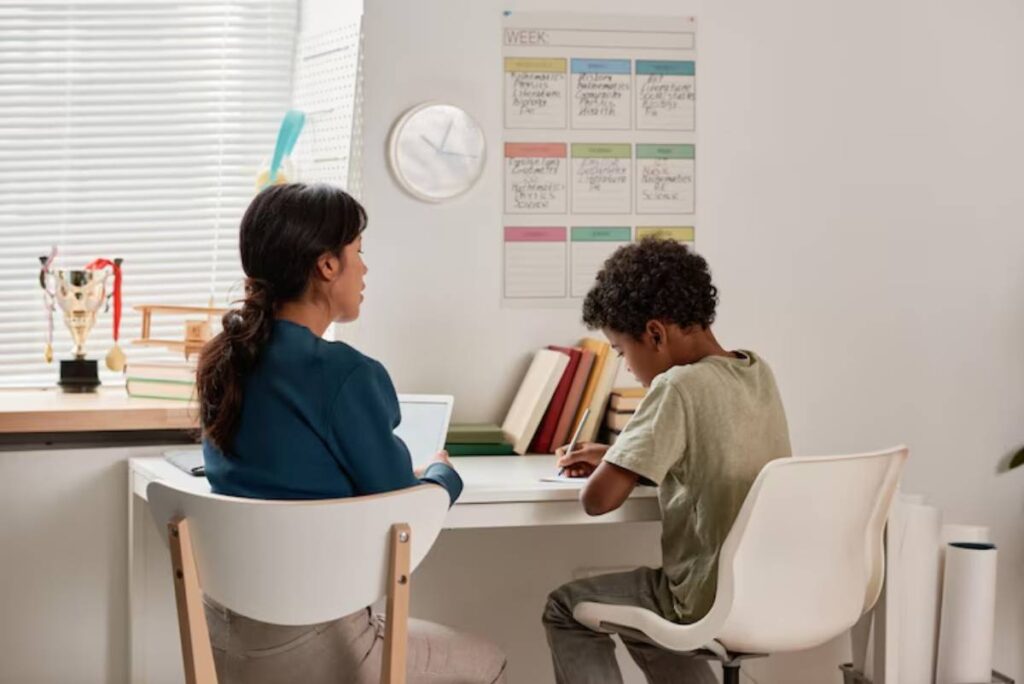The Education Blog

How to Set Up Your Homeschool in 7 Easy Steps
Starting homeschool is both an exciting and intimidating journey. With increasing numbers of families in the UK opting to educate their children at home, it’s never been more important to have a well-structured, thoughtful homeschool setup. Whether you’re making the switch from mainstream education or starting fresh with younger children, a strong foundation can set the tone for a successful learning environment.
In this guide, we’ll walk through seven practical steps to create a homeschool setup that suits your family’s lifestyle. You’ll find tips on everything from legal requirements and lesson planning to physical organisation and daily routines. By the end, you’ll feel confident, equipped, and ready to start homeschooling with clarity and purpose.
Understand the Legal Framework
Before you dive into lesson plans and curriculum shopping, it’s vital to understand the legal side of homeschooling in the UK. While you don’t need special qualifications to educate your child at home, you do have obligations.
If your child is currently enrolled in school, you must write to the headteacher requesting withdrawal. For those not yet enrolled, you can begin homeschooling without prior approval. However, local authorities may make informal enquiries to ensure your child is receiving a suitable education.
Keep documentation clear and accessible. Maintaining homeschool records such as attendance logs, lesson outlines, and samples of work can help demonstrate that your provision is efficient and suitable, should it be called into question.
For a comprehensive look at this aspect, check out How to Legally Start Homeschooling in Your State.
Define Your Educational Philosophy and Goals
Every family homeschools for different reasons: flexibility, tailored learning, values-based education, or special needs. Clarifying your “why” will guide decisions about teaching methods, curriculum, and even your daily schedule.
Ask yourself:
- What are my child’s strengths, weaknesses, and learning style?
- Do I prefer structured lessons or a more fluid approach?
- Am I aiming for GCSEs, life skills, or a blend of both?
Whether you’re drawn to Charlotte Mason, unschooling, or traditional curriculum-based education, having clear goals helps avoid confusion later.
Choose the Right Curriculum and Resources
Once your goals are clear, it’s time to choose the right educational materials. The UK offers a rich selection of homeschool curriculum options across subjects.
Look for:
- Flexibility to adapt to your child’s pace
- Alignment with national standards if aiming for formal exams
- Support materials like workbooks, online platforms, or tutor access
Don’t feel pressured to buy everything at once. Start with the core subjects (English, Maths, Science) and expand as needed. Many homeschoolers also use free resources from BBC Bitesize, Khan Academy, and local libraries.
If you’re stuck, our guide on Choosing the Right Homeschool Curriculum for Your Child can help you compare options.
Design Your Learning Environment
Your homeschool doesn’t need to mimic a traditional classroom, but it should be inviting, organised, and functional.
Tips for a great learning space:
- Use a quiet area with good natural light
- Have shelves or boxes to store supplies neatly
- Keep essentials like stationery, books, and devices within easy reach
- Create a pinboard or whiteboard for weekly goals and reminders
A tidy, designated area helps signal to your child that it’s time to focus. It also saves you time searching for materials and reduces distractions.
Set a Realistic Daily Routine
Consistency helps children thrive, especially when shifting from structured schooling. However, flexibility is one of homeschooling’s greatest benefits.
Consider using time blocks instead of rigid schedules. For example:
- 9:00 – 10:00: English
- 10:15 – 11:15: Maths
- 11:30 – 12:00: Outdoor break or free reading
Build in downtime, hands-on projects, and play. Don’t forget to account for your own work or household responsibilities too.
Step 6: Gather Essential Supplies and Tools

A well-equipped homeschool saves time and reduces stress. Start with a basic homeschool supply list and add to it as needed.
Must-haves include:
- Calculator, pens, and pencils
- A Watercolour
- Curriculum materials (books, worksheets)
- Organisers or storage bins
Also consider:
- Art supplies
- Science kits
- Timers or planners
Avoid overbuying early on. You’ll soon discover what suits your child’s learning style and your teaching method best.
Step 7: Build in Opportunities for Socialisation and Growth
One common concern is how homeschooled children build social skills. In truth, homeschooling offers unique ways for kids to interact, collaborate, and grow socially.
Ways to encourage connection:

- Enrol in sports, music, or arts classes
- Join local homeschool co-ops or support groups
- Schedule regular playdates
- Volunteer together as a family
Look for community events, workshops, and online forums where your child can meet others and explore new interests.
Your Homeschool Journey Begins with a Solid Start
Setting up your homeschool is more than arranging books and lesson plans. It’s about creating a lifestyle that nurtures curiosity, confidence, and connection. By following these seven steps, you’ll not only meet the legal and practical requirements but also shape an environment where learning can truly flourish.
Remember, no two homeschool journeys look the same. Be open to adjusting your approach as you and your child grow together. The beauty of homeschooling lies in its adaptability – and with the right setup, you’re already halfway there.
Start today with purpose and positivity. You’ve got this!









